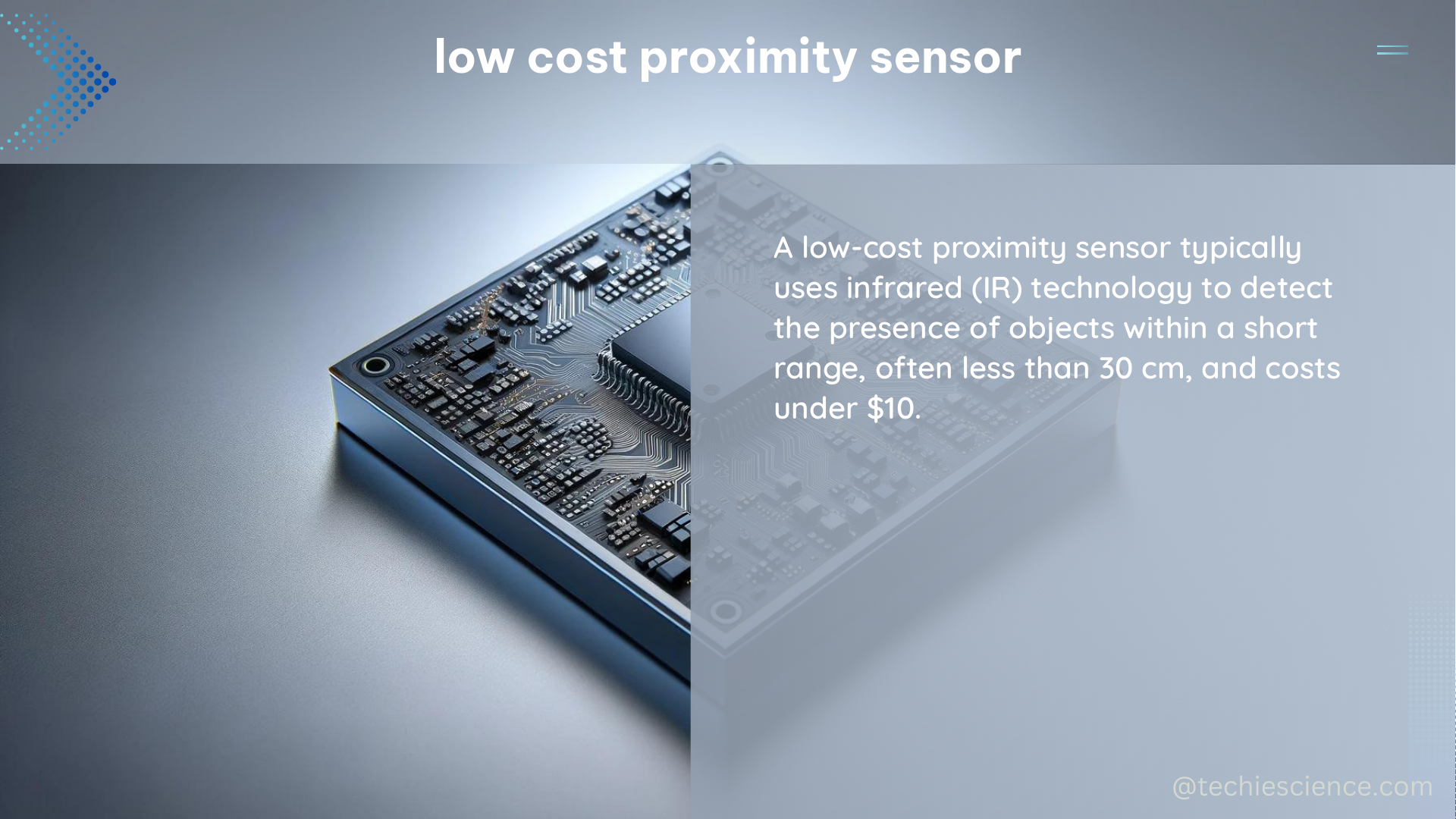Low-cost proximity sensors are versatile devices that can detect the presence or absence of an object within a certain range without physical contact. These sensors are widely used in various applications, such as social contact characterization, robotics, and automation. In this comprehensive guide, we will dive deep into the technical specifications, cost, and DIY implementation of low-cost proximity sensors, providing you with a detailed and actionable playbook.
Technical Specifications of Low-Cost Proximity Sensors
Detection Range
Low-cost proximity sensors typically have a detection range of 1-10 cm, depending on the sensor type and configuration. For example, the HC-SR04 ultrasonic sensor has a detection range of 2-400 cm, while the SHARP GP2Y0A21YK0F infrared sensor has a range of 10-80 cm. The specific detection range of a sensor is crucial in determining its suitability for a particular application.
Data Transmission Rate
The data transmission rate of low-cost proximity sensors varies, but they can exchange up to 1 power packet per second. This rate is sufficient for many applications, such as basic object detection and proximity monitoring. However, for applications that require higher data rates, such as real-time tracking or high-speed robotics, more advanced sensors with higher data transmission rates may be necessary.
Attenuation Threshold
The attenuation threshold for low-cost proximity sensors is typically set at -75 dBm, which allows the detection of proximity events between devices situated in the range of 1-1.5 m of one another. This threshold is a measure of the minimum signal strength required for the sensor to detect a nearby object. A lower attenuation threshold means the sensor can detect objects at a greater distance, but it may also be more susceptible to interference and false positives.
Power Consumption
Low-cost proximity sensors consume low power, making them suitable for battery-powered applications. For instance, the sensors used in the study mentioned in the reference consume about 10 mW during operation. This low power consumption is a key advantage of these sensors, as it allows them to be used in a wide range of portable and embedded systems.
Cost of Low-Cost Proximity Sensors

Sensor Pricing
As the name suggests, low-cost proximity sensors are relatively inexpensive. The cost of these sensors can range from a few dollars to tens of dollars, depending on the sensor type, detection range, and additional features. For example, the HC-SR04 ultrasonic sensor can be purchased for around $2-$5, while the SHARP GP2Y0A21YK0F infrared sensor typically costs $10-$15.
Factors Affecting Cost
The cost of low-cost proximity sensors is influenced by several factors, including the sensor technology, manufacturing process, and economies of scale. Sensors that use more advanced technologies, such as time-of-flight (ToF) or radar-based detection, tend to be more expensive than simpler sensors like infrared or ultrasonic. Additionally, sensors produced in higher volumes often have a lower per-unit cost due to the economies of scale.
DIY Implementation of Low-Cost Proximity Sensors
Sensor Selection
When selecting low-cost proximity sensors for DIY implementation, it is crucial to consider the sensor’s technical specifications, availability, and compatibility with the intended application. Factors such as detection range, response time, and power consumption should be carefully evaluated to ensure the sensor meets the requirements of the project.
Sensor Calibration
Calibration is an essential step in ensuring the accuracy and reliability of low-cost proximity sensors. Calibration techniques, such as those presented in the reference, can help improve the data quality of these sensors. This may involve adjusting the sensor’s sensitivity, offset, or other parameters to ensure consistent and accurate readings.
Long-Term Evaluation and Calibration
Long-term evaluation and calibration of low-cost proximity sensors are necessary to ensure their continued accuracy and reliability. Environmental factors, such as temperature, humidity, and electromagnetic interference, can affect the sensor’s performance over time. Periodic recalibration and testing can help maintain the sensor’s accuracy and prevent drift or degradation.
DIY Sensor Integration
Integrating low-cost proximity sensors into DIY projects can be a rewarding and educational experience. This may involve connecting the sensors to microcontrollers, such as Arduino or Raspberry Pi, and developing custom software to process and interpret the sensor data. Tutorials and online resources are available to guide you through the process of building your own proximity-sensing systems.
By following the guidelines and technical details provided in this comprehensive guide, you can effectively leverage low-cost proximity sensors in your DIY projects, research, or industrial applications. Remember to carefully consider the sensor’s specifications, calibrate it properly, and monitor its performance over time to ensure reliable and accurate results.
References:
- Using wearable proximity sensors to characterize social contact patterns in a village in rural Malawi, EPJ Data Science, 2021.
- Sensor System – an overview, ScienceDirect Topics, n.d.
- Data-Driven Techniques for Low-Cost Sensor Selection and Calibration in Air Quality Monitoring Systems, Sensors, 2022.
- Low Cost Sensor Networks: How Do We Know the Data Are Reliable?, ACS Sensors, 2019.

The lambdageeks.com Core SME Team is a group of experienced subject matter experts from diverse scientific and technical fields including Physics, Chemistry, Technology,Electronics & Electrical Engineering, Automotive, Mechanical Engineering. Our team collaborates to create high-quality, well-researched articles on a wide range of science and technology topics for the lambdageeks.com website.
All Our Senior SME are having more than 7 Years of experience in the respective fields . They are either Working Industry Professionals or assocaited With different Universities. Refer Our Authors Page to get to know About our Core SMEs.